Leaving Nagoya behind in the rearview mirror (it’s doubtful that trains have these but go with me on the metaphorical ride here), my shinkansen sped towards Kyoto, the former capital of Japan, some 40 mins to the southwest.
Where Tokyo boasts of the present and future successes of the Japanese economy, Kyoto showcases, in poetic beauty, the past glories and traditions of the country.

In the knowledge that I would be spending Christmas in the city, I had chosen what was, ostensibly, a more upmarket Airbnb than in most other places – a boutique business, B&C ManiMani – with phenomenal reviews both of the property and the owner, Yoko.

The reviews were all wrong. The place wasn’t good; it was brilliant, superlative. Yoko want a good host; she was a perfect host.
Every minute detail had been considered with great attention, great care. As I was greeted and welcomed at the front door I was invited to swap my shoes for comfortable slippers which were sitting on a shelf below which, on a printed vignette, were the words “welcome, John”.
My room on the first floor was a traditional futon on tatami flooring (which, I would later discover, was gloriously comfortable) and even the door of my bathroom sported a sticker with “welcome, John”, the comma alone stifling my toilet humour.
I was greeted by Tsunao (“everyone calls me Tuna”), one of Yoko’s associates, as she was giving a lecture at the local university. Armed with a map and some good advice from Tuna, I set off to use the remaining daylight hours to good effect.
One of the great things about Japan in general is that people cycle everywhere which is not only healthy and environmentally friendly, it also stops pedestrians using their mobile phones as they walk for fear of a cyclist-induced concussion. The specific benefit to me of this trend was that B&C ManiMani had bikes available for use free of charge. The specific inconvenience to me was that the bikes were engineered for smaller people and, even with the seat fully raised, I looked like I was attempting to knee myself repeatedly in the face while pedalling.
If you type Kyoto into Google images, one of the first things you will see, among the colourfully dressed Geishas, is a picture of Kinkaku-ji – the Golden Pavilion. I shall leave the link to inform you of its history and architecture, but I will tell you my impressions on seeing it. You might think that a golden temple would look opulent, ostentatious; but it doesn’t. Smiling radiantly from the complex simplicity of its garden setting, the calm waters of the lake in front reflecting its warmth, the temple is a paradox. It glorifies nature whilst standing apart from it; it draws the attention without being attention-seeking; it somehow evokes not wealth but purity. In an insight into Japanese culture and the collective psyche, the word for “clean” also mean “beautiful”, and it is the clean lines and lack of visual clutter that make the temple so exquisite. Perhaps, in this sense, cleanliness is next to godliness after all?
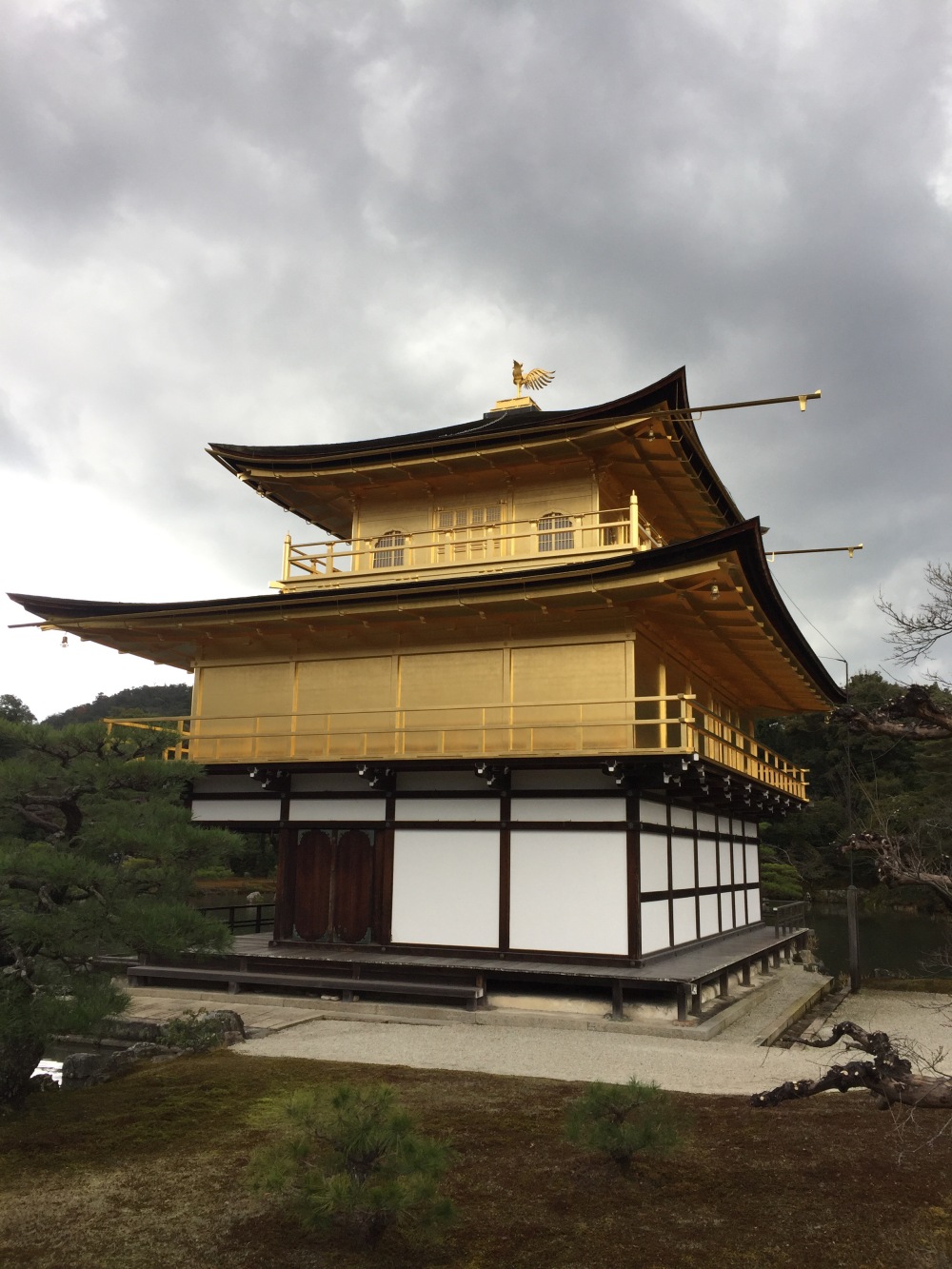
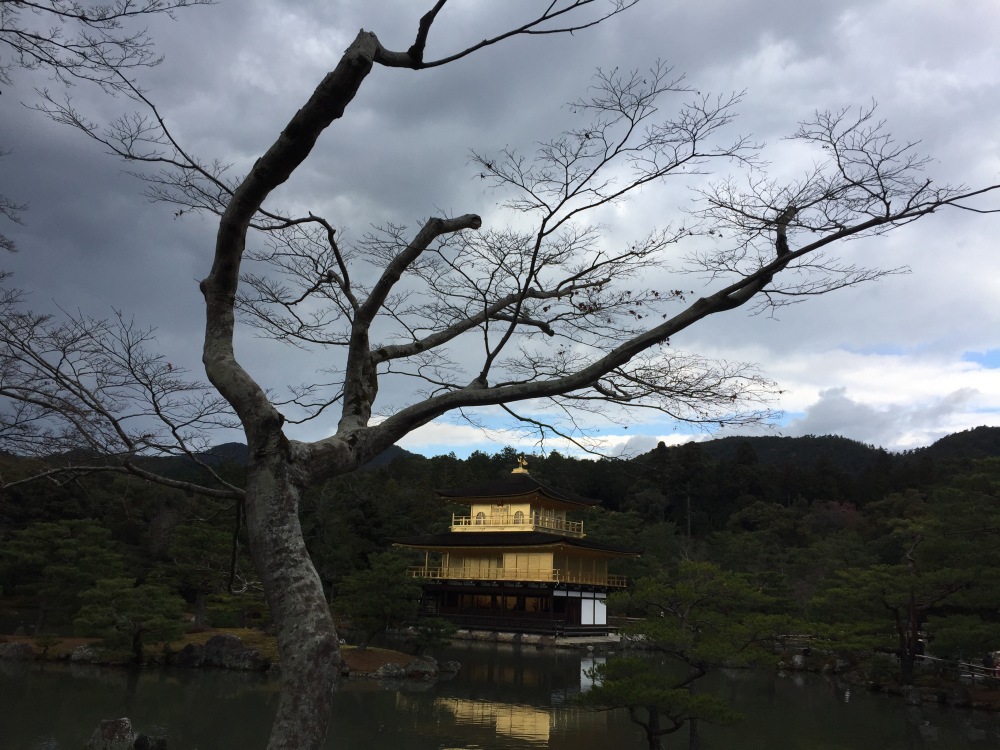
Near the exit lay a small temple where people were buying candles and lighting them in prayer. Closer inspection showed the candles to have very specific purposes. Zoom in if necessary:


Next stop, very close by, was Ryoanji, a shrine famous for its gardens, in particular its Zen rock garden. (If you’re picturing Buddhist monks with electric guitars, I’m afraid it’s the other kind if rock.) The whole place was exquisite, a perfectly organised wilderness with a kaleidoscope of winter hues.



On reaching the rock garden, after all this beauty, I was initially underwhelmed – it was just rocks, after all – however, I tried to follow the thought process. The principle of Zen is that, through simplification and focus, we can find peace and harmony, therefore, focusing thoughts on something primordial and ostensibly unchanging can banish clutter from the mind.
Coming to this conclusion gave me greater appreciation. 10 minutes self-enlightenment was enough, though. It was still just rocks, after all.
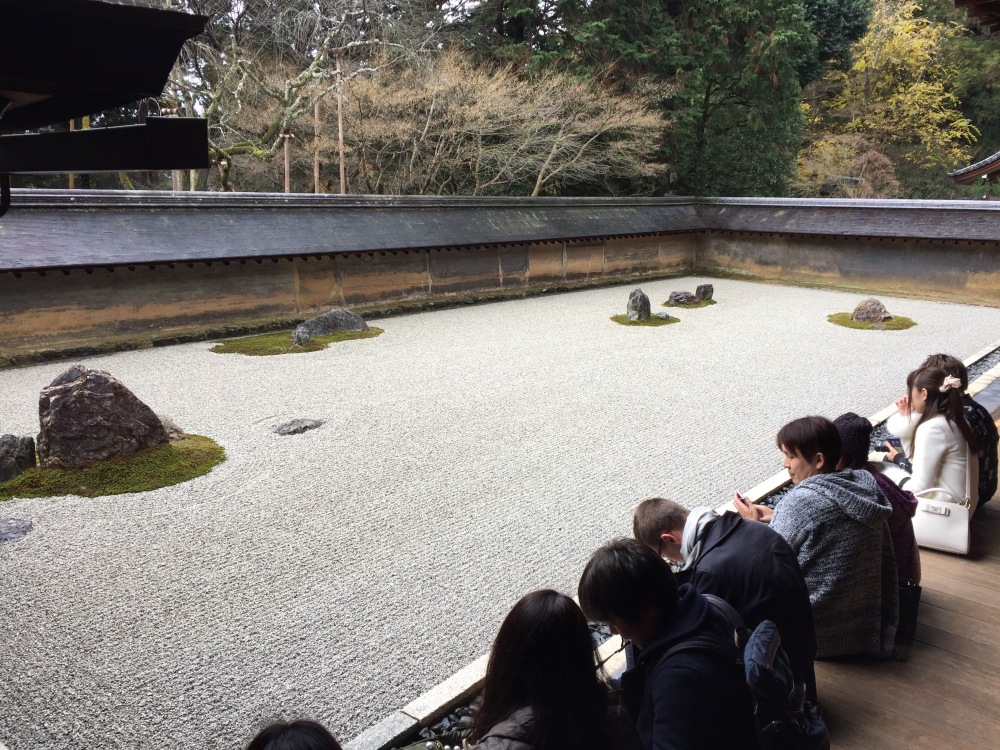
Later that evening I met Yoko and my housemates, Tom and Jasmine, newly-weds from Melbourne on their honeymoon. In the knowledge that I would be spending Christmas with them, I was hoping we’d all get along. I need not have worried. Three nicer people would be hard to find. More about them in the next post.
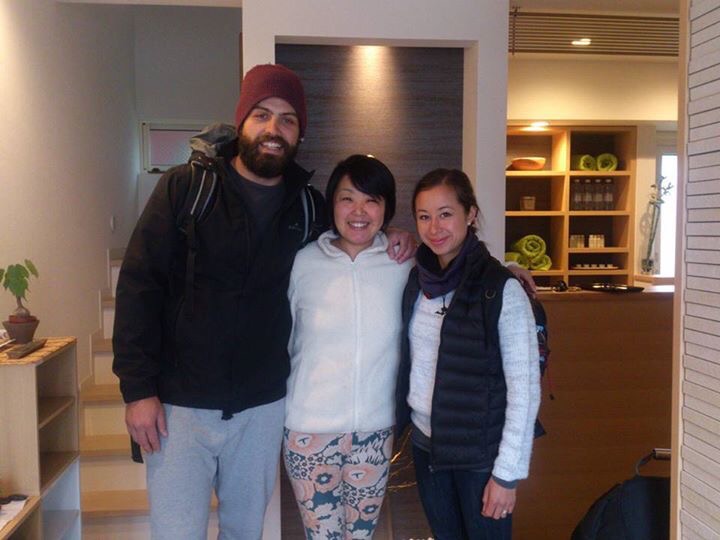
Yoko was a force of nature: bubbly, curious, chatty and unfailingly thoughtful. She helped me set an itinerary for the following day that was to prove excellent.
My first scheduled stop was at the Fushimi Inari shrine. The massive gate below was synecdoche for the next two hours.
As you will see from the shot below, this shrine had a penchant for gates. It does make for some excellent photo opportunities, so I’m not complaining. All joking aside, this is a Taoist shrine and the gates represent passage from one world to the next. Individuals or even corporations, though the years, have purchased these memorial gates, had them engraved and then added to the pathways, eventually leading to the corridors of orange we see today.
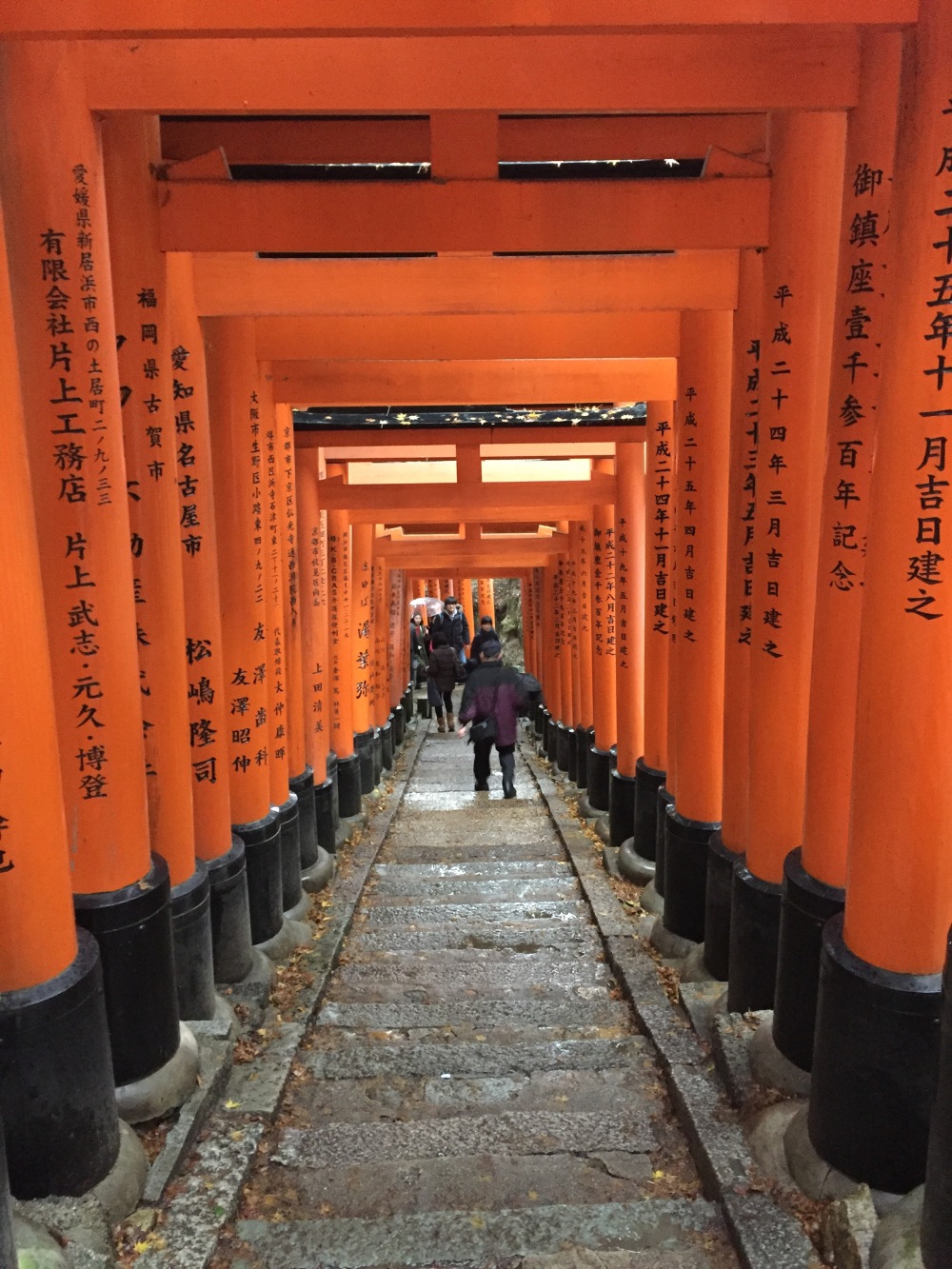


There was once a Taoist monk who was caught selling gates at an extortionate price for his own personal gain. The scandal was known as “Gategate”….
While you attempt to deal with that awful joke, let me transport you (via a cute little rail journey on the Randen) to Arashiyama, famed for its bamboo forest.


Mere steps from the station, one finds oneself at the beginning of an other-worldly passage among 30-40ft-high bamboo shafts. The green light that filters through seems an almost tangible mix of serenity and magic. Were it not for the flock of noisy tourists around me, squawking like frumious bandersnatches, I could easily have been carried away on the wings of fantastical revery. As it was, my feet stayed firmly planted. Squawk, squawk.
On exiting the forest, one has the option of taking the “Romantic train”. (I’m not making this up – that’s what it was called in English.) This train winds its way up the nearby river valley, offering unparalleled views, and deposits it’s passengers a long way upstream where boatmen then offer to row you back down the river. How romantic the train would be for a solo traveller I wasn’t sure, but I bought a ticket nonetheless.
The journey was indeed romantic and myself and I cuddled as the train trundled onwards.

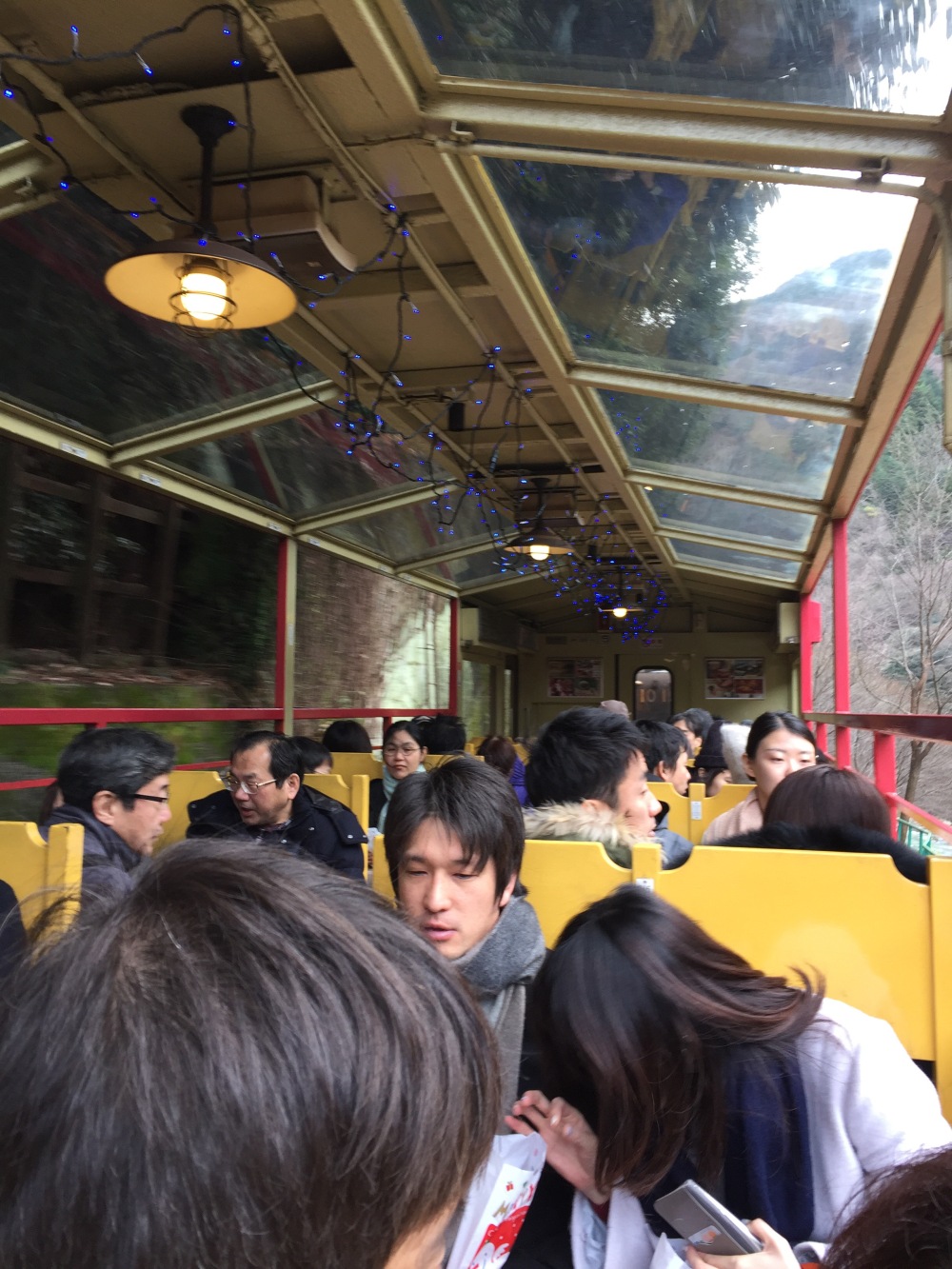
The passengers all piled out at the uphill station and those taking the boat jumped on a bus for a short ride to the boating jetty.
Roughly 12 people, (I didn’t count, I must confess) myself included, were loaded onto a long, wooden vessel with a clear plastic covering to protect us from the elements whilst allowing a good view. 
The crew consisted of a chap manning the rudder in the stern of the boat, a single-oared rower and a punter (who also doubled as a rock fender-offer) in the bow. They worked in rotation as the rowing was tiring work.
We row, row, rowed gently down the steam until we reached some faster sections amongst the rocks which the crew navigated with consummate skill and a tourist-pleasing amount of splashing. Seeing the valley from the water gave a very different perspective from the train journey. Once we reached the lower stretch of broader, calmer river, the plastic covering was removed and we could stand and get snap-happy.
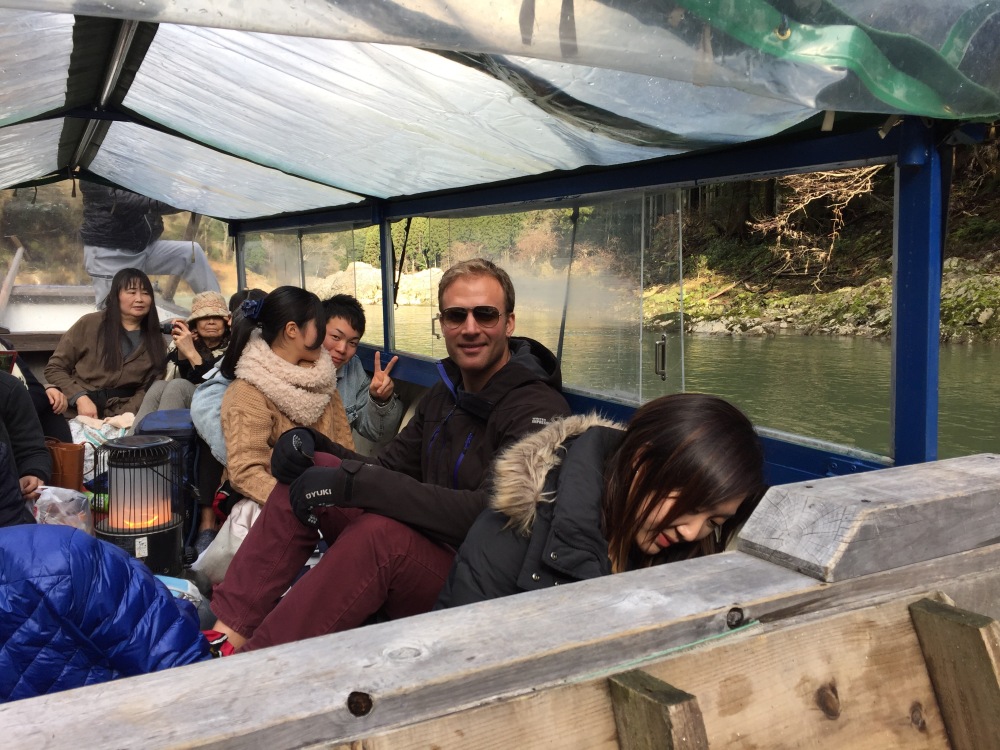
A fabulous day that was to improve in the evening. And I’ll tell you all about that in the next post.



I thoroughly enjoyed reading through your blog. What adventures! I love your motto of “saying yes to adventure” and I really wish I had sometimes been more adventurous myself (but it’s never too late I guess?)
Are you still in Japan?
LikeLiked by 1 person
Thanks Marina. You’re probably the only person, my parents aside, to have read the whole thing. I’m several weeks behind with updates so am now in India, trying desperately to get back up to speed.
LikeLiked by 1 person
I’ll happily recommend it to fellow travel bloggers/lovers ^^
Have a great time in India!
I’m looking forward to reading about it 😉
LikeLike
Thanks. I’m reciprocate as soon as I’ve managed to get back on track. I need to do that before my memory fails me!
LikeLiked by 1 person